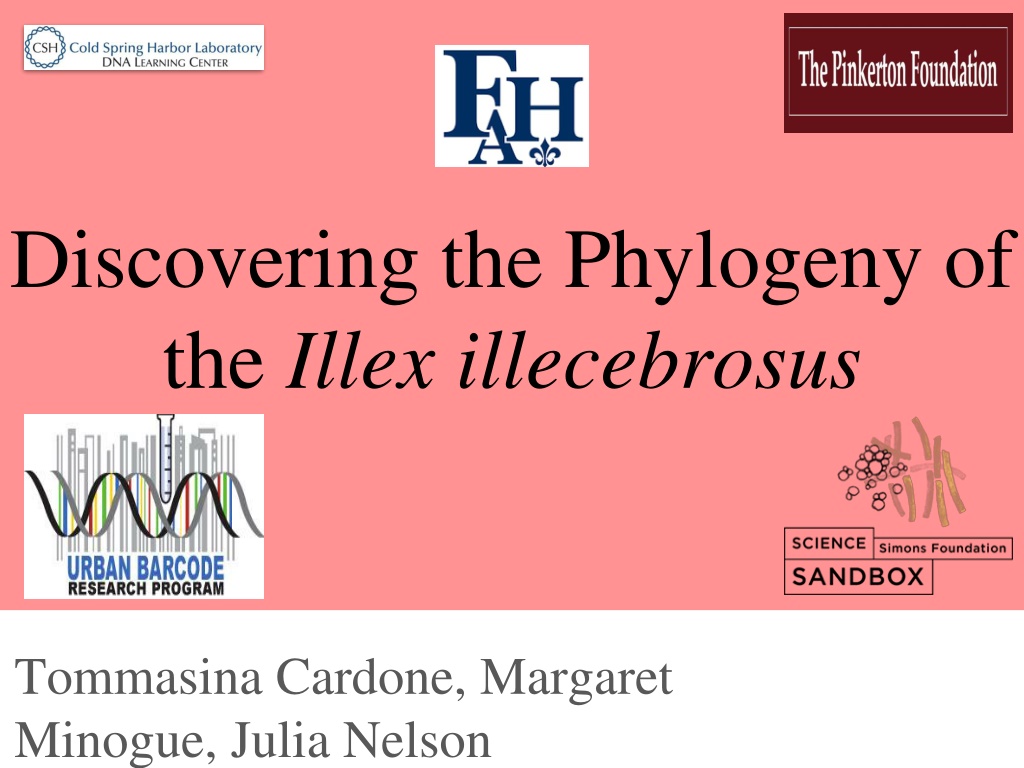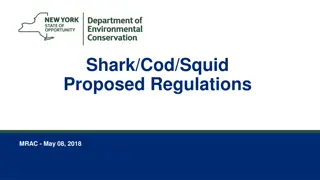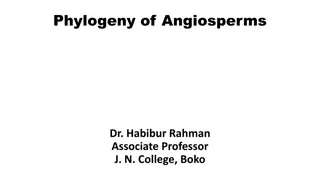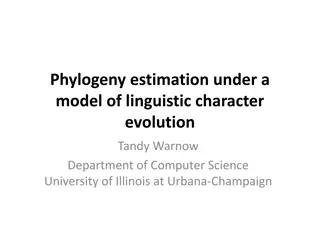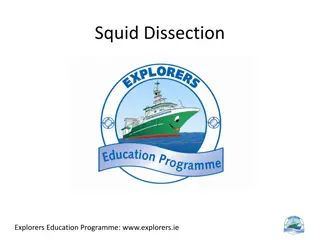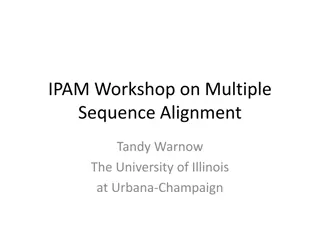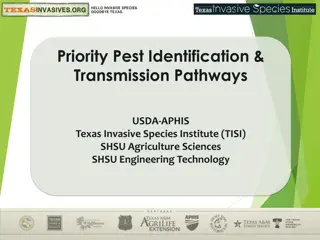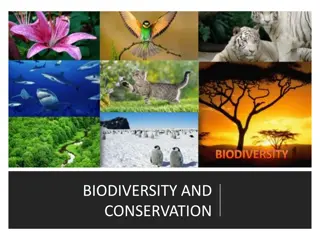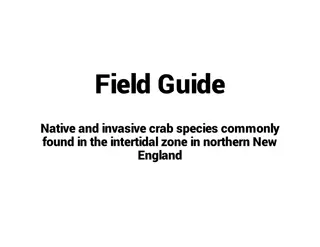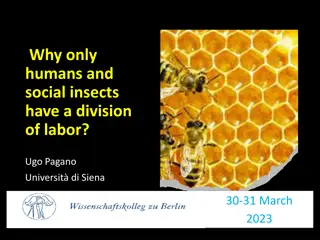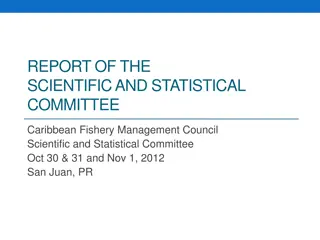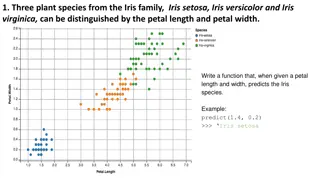Unveiling the Phylogeny of the Illex illecebrosus Cephalopod Species
The research delves into the intelligence and evolutionary traits of Illex illecebrosus, a cephalopod native to the Northwest Atlantic, aiming to uncover its ancestral relations through DNA barcoding. Insights into the similarities between squid and humans in sensory organs provide intriguing clues, showcasing convergent evolution. Studying squid ear similarities sheds light on their unique auditory systems, hinting at shared evolutionary origins with humans.
Download Presentation

Please find below an Image/Link to download the presentation.
The content on the website is provided AS IS for your information and personal use only. It may not be sold, licensed, or shared on other websites without obtaining consent from the author. Download presentation by click this link. If you encounter any issues during the download, it is possible that the publisher has removed the file from their server.
E N D
Presentation Transcript
Discovering the Phylogeny of the Illex illecebrosus Tommasina Cardone, Margaret Minogue, Julia Nelson
Abstract The Illex illecebrosus, a cephalopod native to the Northwest Atlantic region, has tremendous intelligence when compared to other similar organisms. Upon the successful barcoding of the Illex illecebrosus, the scientific community will gain a better understanding of its phylogeny, and ways in which this information can be utilized moving forward. Our objective for this experiment is to draw conclusions regarding the ancestral relations of the Illex illecebrosus.
Introduction The Illex illecebrosus, is a lot smarter than we think. Scientists showed that the Illex Illecebrosus can open jars, which shows how intelligent they really are. This is due to the high rate of RNA editing, which was a product of evolution. Animals are able to turn off the editing mechanism according to their habitat.
How are squid and humans related? One of the similarities that squid and humans have is in the structure of their ear and also their camera eyes. The human eye sees when light enters the cornea and then passes through the lense. The squid eye also has a lense. The contrast between the squid and human eye is that the squid eye is larger to help them see. Squid can also see in the dark so they can see their predators in the dark. This is proof of convergent evolution. Similar to how humans have a cochlea, squid have two organs called statocysts, located near the base of the brain. It is a hollow sac filled with fluid and lined with hair cells.
Studies of Squid Ear Similarities Methods of studying the nerves coming from squid statocysts and in newborns nerves connected to cochlea were published in the July 2010 issue of the journal Marine and Freshwater Behavior and Psychology. Results of these tests showed that squid statocysts only respond to low frequencies of up to 500 Hertz.
So How Does Barcoding Help? Through convergent evolution, we can see how the Illex illecebrosus has evolved and how these changes may help the environment and/or the biotic species in it. The reason this is convergent evolution is because the two species have different abiotic factors, such as environment. Based on the conclusions of humans and squid having similar eyes and ears, we can infer that the squid has converged from a similar ancestor to humans at some point in history. Many animals use hair cells to detect sound, and human hair cell structures in the cochlea are similar to those in squid. This leads scientists to theorize that auditory systems evolved from the same origin a very long time ago. To have the DNA barcode of squid, it would give us its phylogeny.
Methodology The first squids DNA was degraded by formaldehyde. A second squid was ordered from a local fish market, and it was examined to confirm it was the Illex illecebrosus. As this squid is commercially important, it is vital for us to be able to rapidly identify them scientifically. We extracted samples from muscle tissue of varied parts of the squid, and isolated the DNA. We then amplified the DNA using a Polymerase Chain Reaction. We moved on to our bioinformatics phase by using DNA Subway. Through this website, we created a consensus sequence, phylogenetic tree, and a percent similarity chart.
Discussion Limitations Insufficient template DNA Formalin Formalin adds to the nucleic acid base, which then forms a methylol group. It can attract electrons on an amino base to form a methylene bridge between two amino groups. It can leave behind pyrimidine and purine residues. Formalin may also cause hydrolysis, the chemical breakdown of a compound due to its reaction with water, to slow down. Excess template DNA ties primers together. Primers bonded together could mistarget the certain sequence of the DNA that was intended, leading to insufficient results. Additionally there could have been insufficient DNA because of a degraded or failed synthesis primer.
Using phylogeny, we found forty- seven of the closest relatives to the Illex illecebrosus. The squid DNA that we collected shares 99.46% of its DNA with Doryteuthis pealeii, we concluded that there could be an error in the scientific naming of this squid. Its anatomy is similar to other Illexes, however, its genetic makeup shows that it is most likely from longfin squid like the Doryteuthis pealeii. These results begin a discussion on divergent evolution: although some species might have similar ancestors, they do not necessarily share evolutionary characteristics based on their environment.
Figure 2: Similarity Percentage Chart
Figure 3: Correlating names for the similarity percentage chart
Fig. 4: Phylogenetic Tree
Acknowledgements References 1. (n.d.) Retrieved from http://squid.tepapa.govt.nz/the-squid- files/article/how-big-is-the-colossal-squid (n.d.) Retrieved from https://www.britannica.com/animal/squid (n.d.) Retrieved from https://www.fromthegrapevine.com/nature/octopuses-squids- are-smarter-we-thought-and-heres-why (n.d.) Retrieved from https://www.squid-world.com/squids-and- global-warming/ (n.d.) Retrieved from https://www.whoi.edu/oceanus/feature/scientists-find-that- squid-can-detect-sounds (n.d.). Retrieved from https://www.dnabarcoding101.org/lab/protocol-1.html (n.d.). Retrieved from https://www.dnabarcoding101.org/lab/protocol-2.html (n.d.). Retrieved from https://www.dnabarcoding101.org/lab/protocol-3.html (n.d.). Retrieved from https://www.dnabarcoding101.org/lab/protocol-4.html 10. (n.d.). Retrieved from https://www.fws.gov/aah/PDF/PCRTS1_NoBand.pdf 11. (n.d.). Retrieved from https://www.nucleics.com/DNA_sequencing_support/DNA- sequencing-failed-reaction.html 12. (n.d.). Retrieved from https://www.nature.com/scitable/topicpage/dna-replication-and- causes-of-mutation-409 13. (n.d.). Retrieved from https://medicine.yale.edu/keck/dna/faq/fail.aspx 2. 3. Our mentor, Mrs. Ashkenazy Dr. de Carvalho Mr. Somma The Urban Barcode Project for this amazing opportunity 4. 5. 6. 7. 8. 9.
